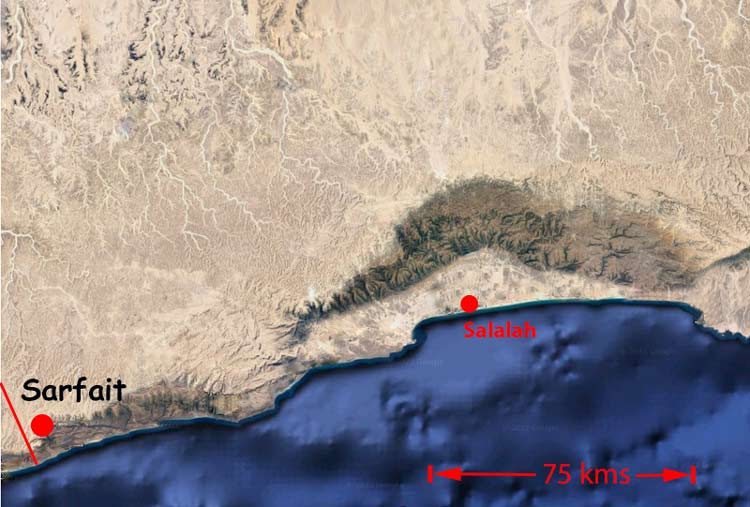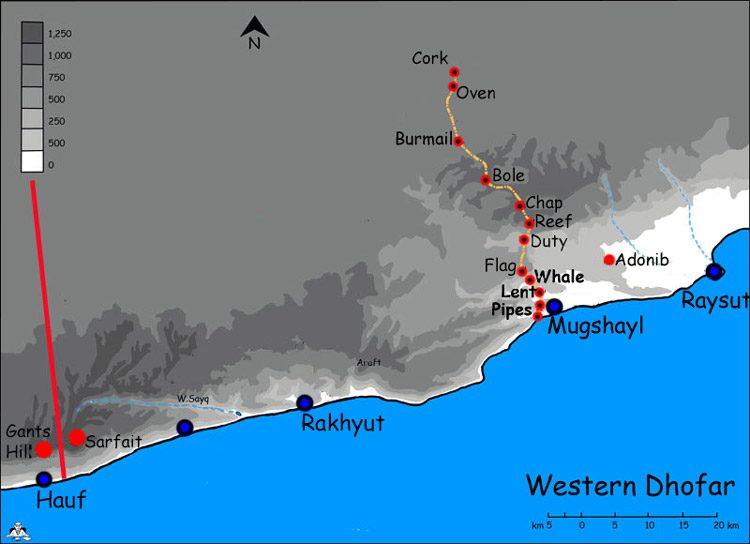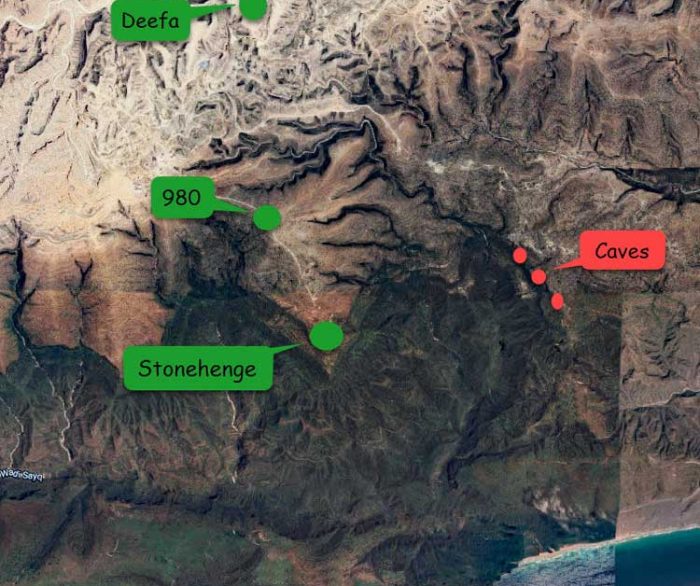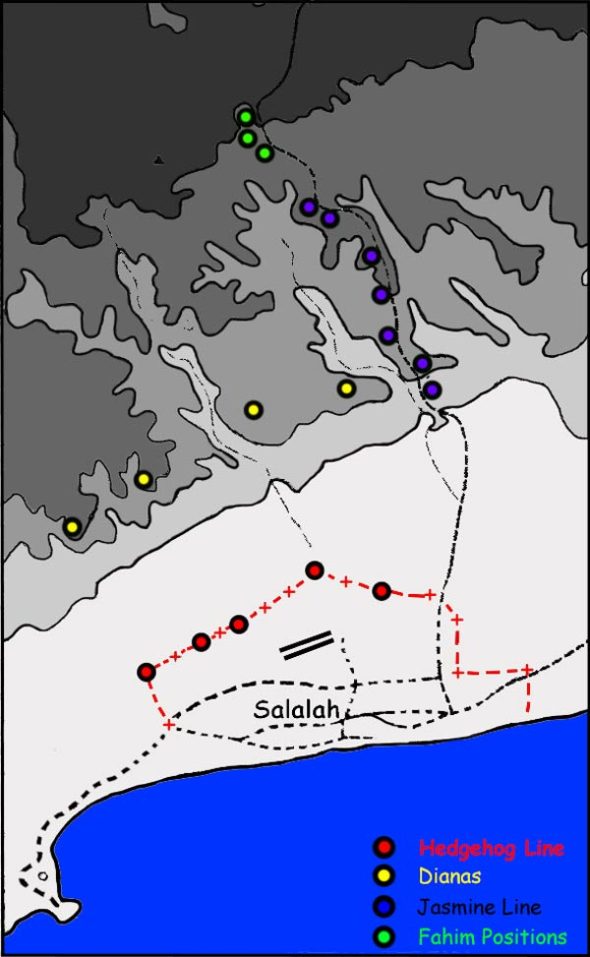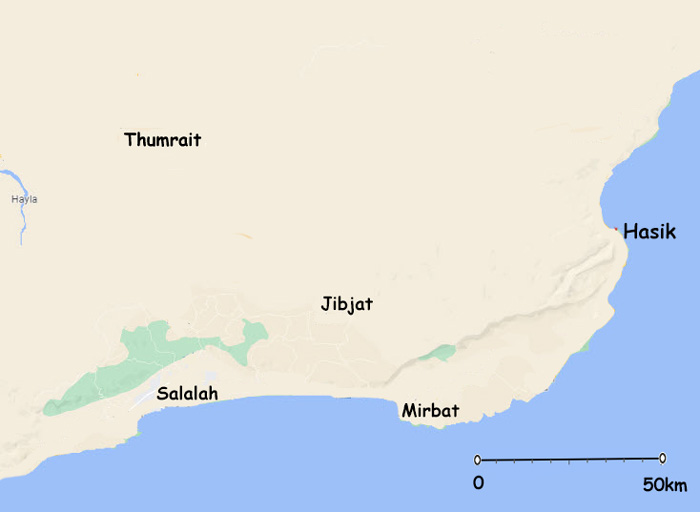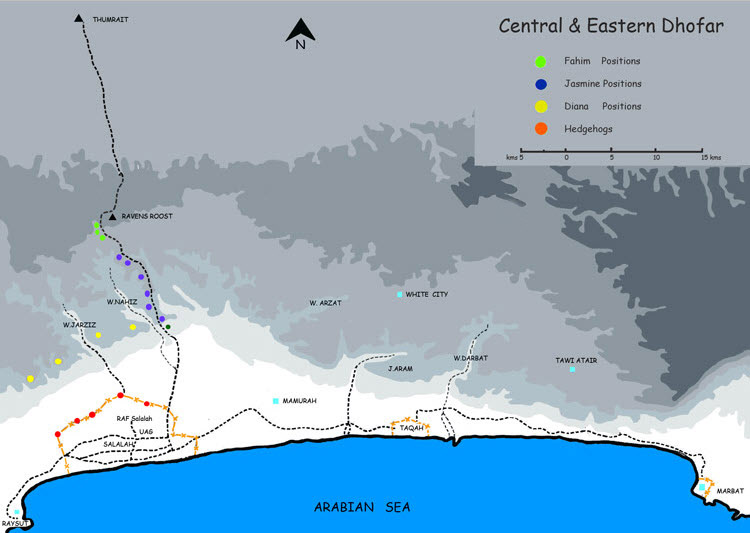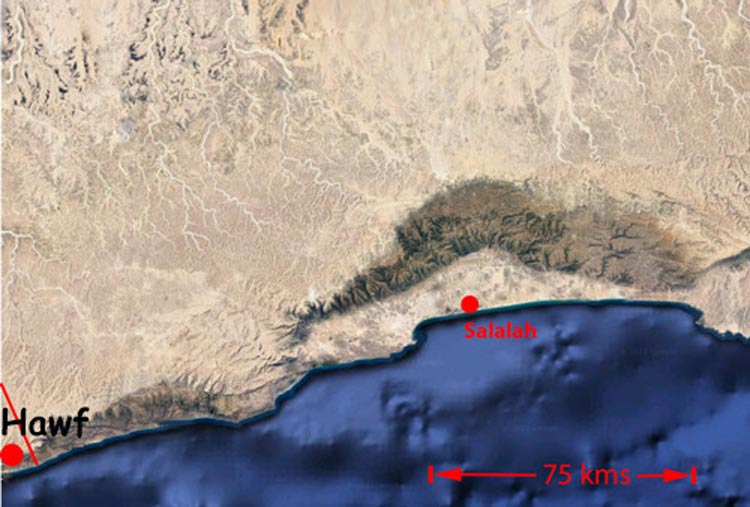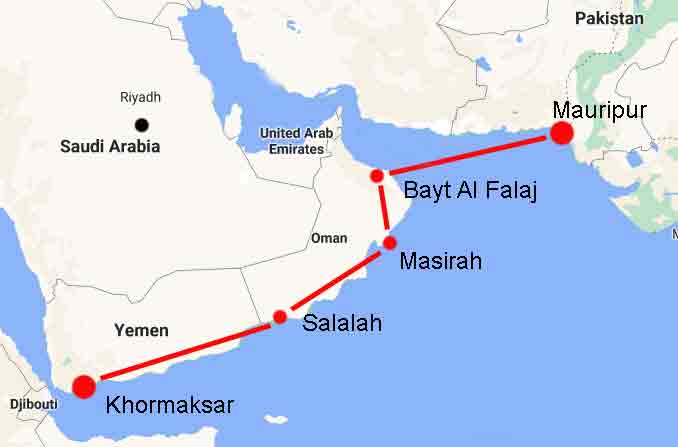
PDYR’s Problems
A notion arose a few days ago to question why did PDRY not support PFLOAG with quantities of weapons that really would have turned the tide of the war.
There were perhaps three game-changeing weapons that would have made all the difference.

The SA-7 is a man portable infrared homing anti-aircraft missile which brought down more than one Strikemaster the war and enforced a change in flying tactics which limited the jets ground attack role. The service ceiling of the Strela-2M, available in 1970, was 2.3 KM and its slant range was 4.2 Km. The SA-7 was available to allies of the Russians from 1970 onwards and it was used by the Front in 1975.
The RCL tubes were relatively small and easy to move around the jebel. The shells were large and had a back blast which threw up a lot of dust but four could be fired in a minute and then the crew could run away to escape retaliation. In bombarding the Simba position thousands of RCL and mortar bombs were used from outside Dhofar in what was then the VI governorate of Yemen so one might have expected a few of them to be passed along the Ho Chi Minh trail below Capstan into Dhofar.
The 12.7mm Spaghin machine gun is light artillery and can be used aginst land and air targets. It caused damge to the Strikemasters when they came to the aid of BATT in Marbat. It was the equivalent of the 0.50 Browning with much the same range. More of these would have been more than useful to the Dhofari dissidents.
Why did PDYR not provide them in larger quantities?
One theory might be that PDRY had other worries at the time which took precedence over the needs of PFLOAG and the Dhofari dissidents whose war was being conducted on the borders with Oman in what is now the 8th governorate in the far east of the country. They had difficulties with other of their neigbouring states and this was causing them great concerns.
PDRY had problems with Saudi Arabia and with North Yemen (YAR) who were allied to Saudia Arabia. Raids were made by irregular forces operating from Saudi Arabia between October 1970 and June 1971.
Internally a terrorist organisation, FLOSY (Front for the Liberaton of Occupied South Yemen) opposed the NLF (National Liberation Front) who were the de facto rulers of South Yemen. There was an economic crisis in the country as a result of the closure of the Suez canal. The numbers in the army fell by 25% and the population of Aden by 75%. “Workers revolts” led to the take over of private businesses by workers organisations. The NLF also had to deal with insurrection from the Mahra tribesmen in the north east of the 8th governorate.
Externally there were significant border clashes 1972 between YAR and PDYR between February and May. Two thousand, men transported in American made vehicles with American arms, attacked PDYR.
The royalist North Yemenis were supported by Jordan, Saudia Arabia, Israel and covertly by the UK. They had a significant amount of American equipment.
The republicans in PDYR were supported by Egypt and the Soviet Union. Even though Egypt threw out their Soviet military advisors it is reasonable to suppose that PDRY equipment was mainly Soviet in origin after China cut of aid to the Dhofari rebels in 1971. Equipment may have come directly through the Soviet naval facility in Aden.
Certainly PDYR was in difficulties and when you are in a hole it s probably wise to stop digging. For reasons that are unclear they stretched their resources even further by attacking the fort at Habrut. This prompted a brisk retaliation against Hauf by the Omanis.
It is possible that by this time PDYR had come to the conclusion that in supporting the dissidents in Dhofar they were on a hiding to nothing and that with limited materiel it was best to prioritise the conflict with YAR and Saudi Arabia before meddling with Oman and her allies.



